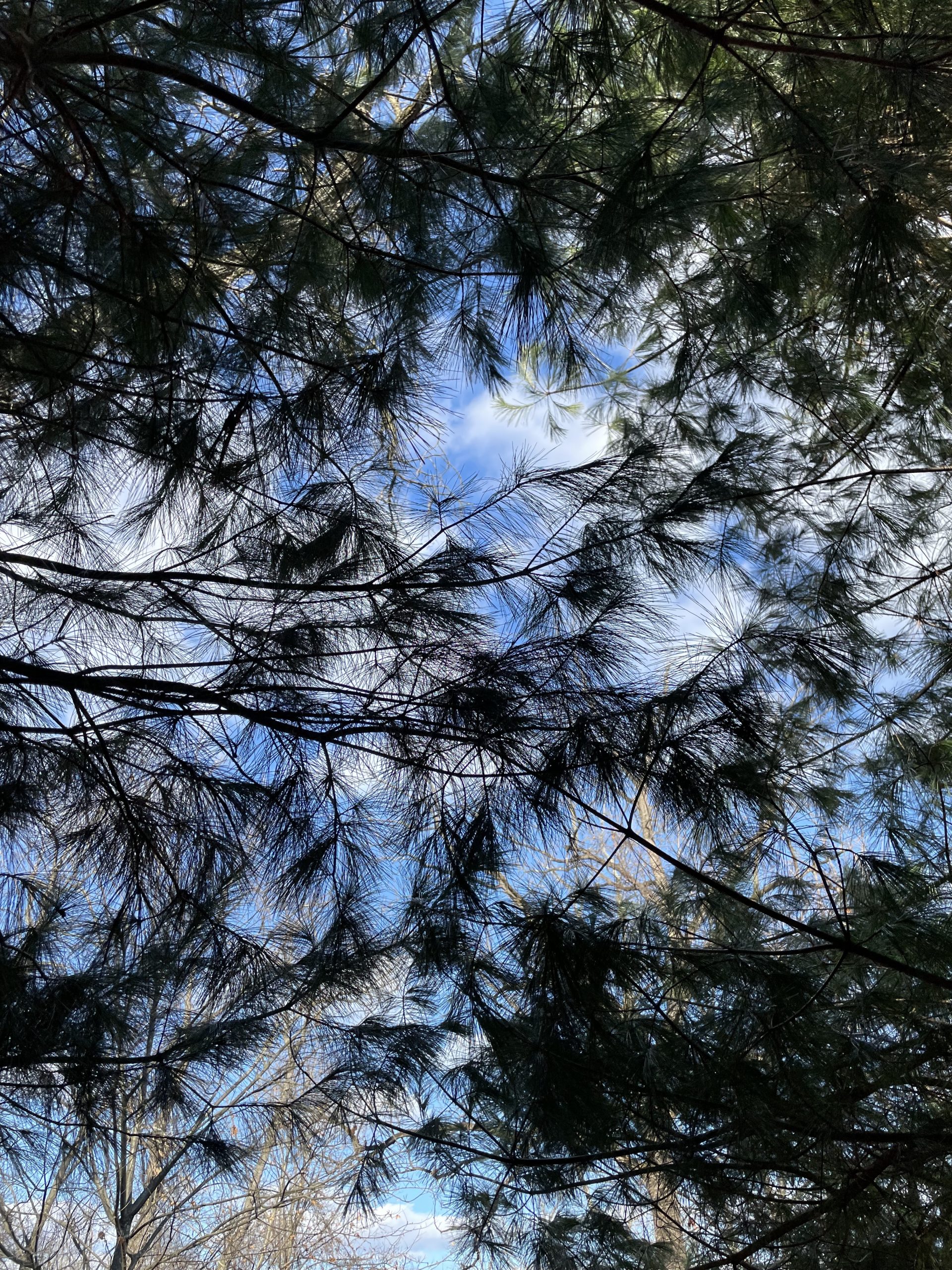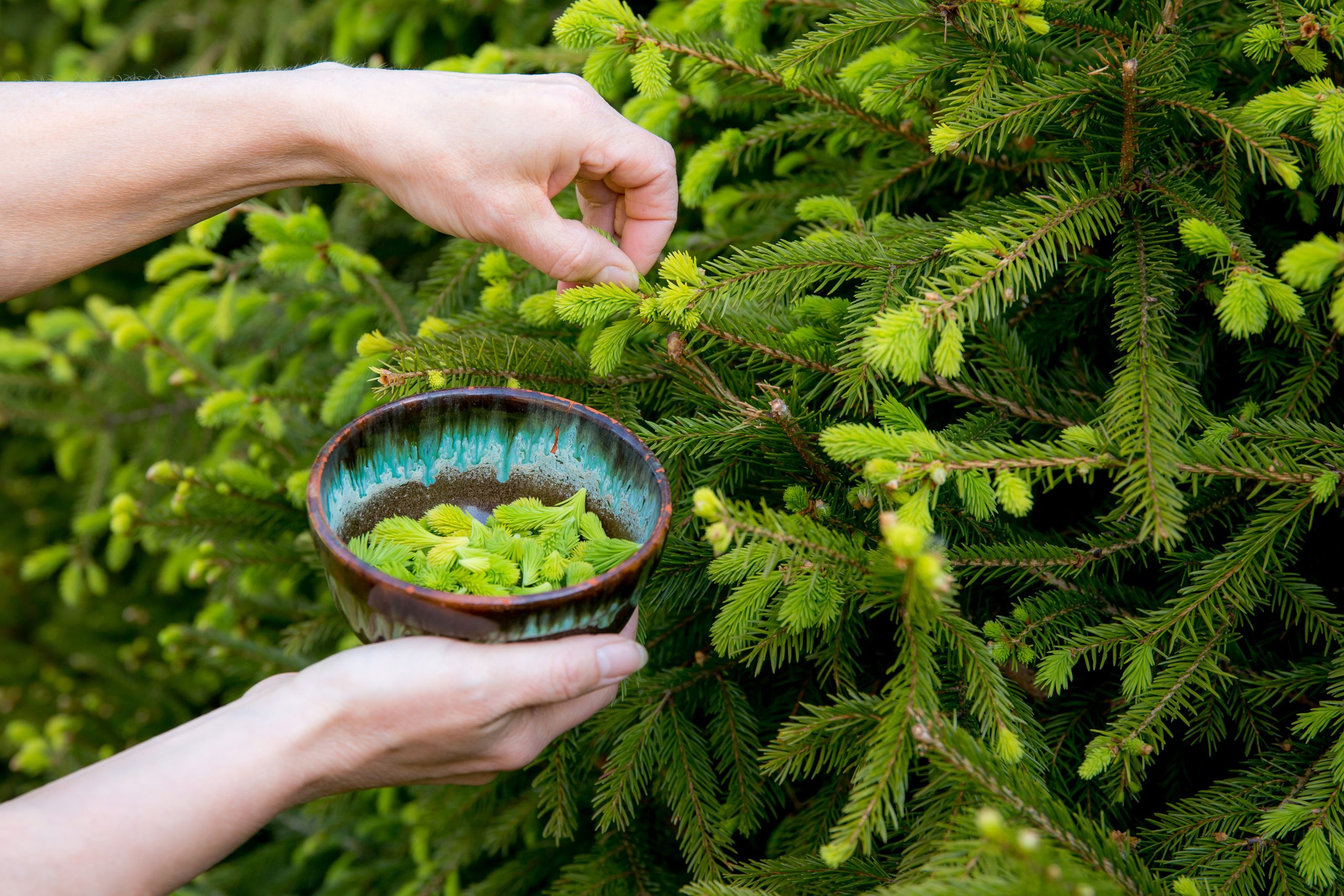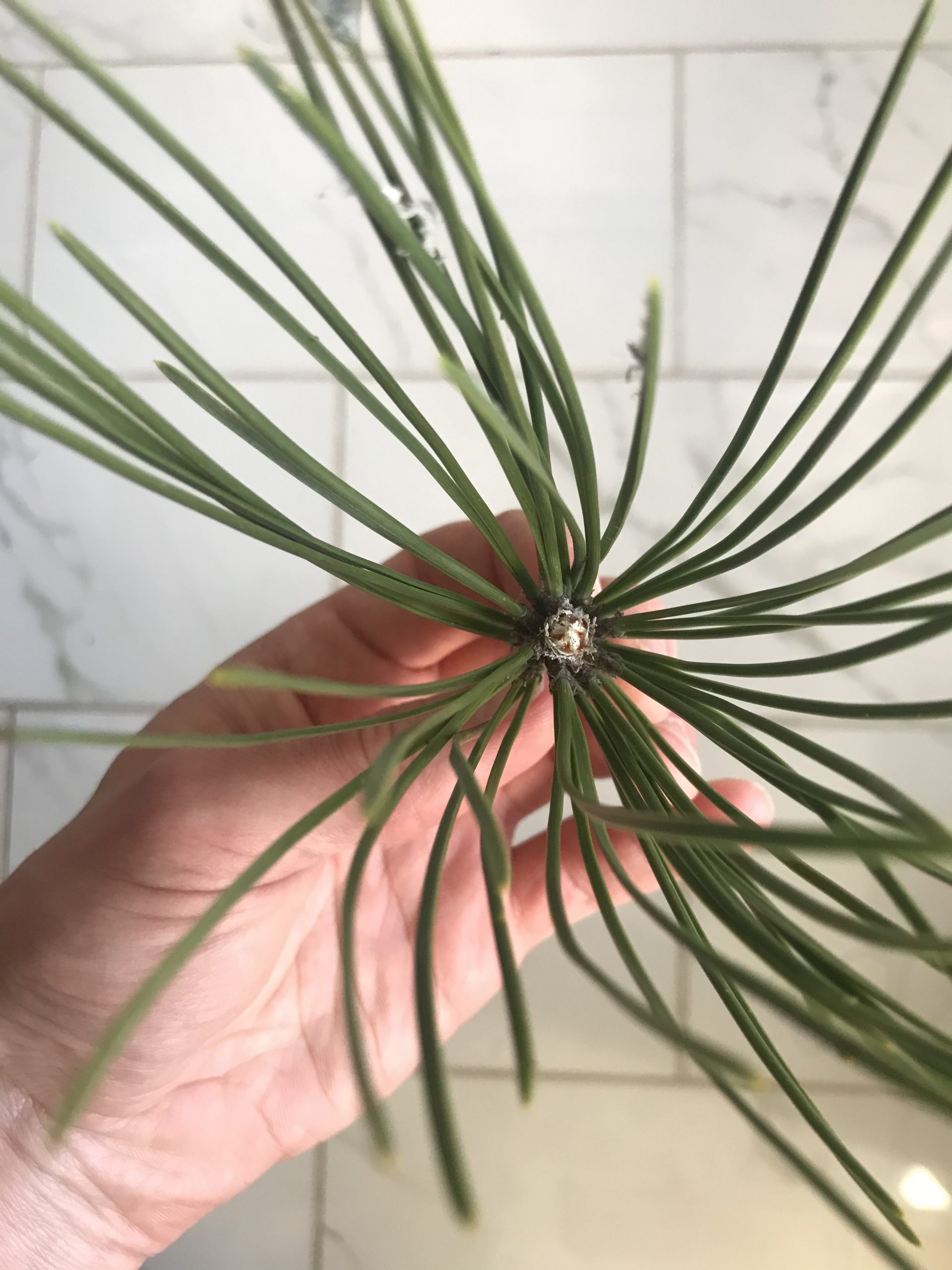Wild-Fermented Pine Soda: An Exploration of Winter’s Flavors and Wild Soda
** Scroll to the bottom of this post for my Pine Soda recipe **
Scrounging for Local Food to Ferment in March
In late Winter and early Spring the Northeast doesn’t offer many fresh, local ingredients to consume or preserve. Farms might offer a few varieties of fresh greens, but the remaining produce (such as root veggies and apples) from the prior year’s harvest is lacking.
Many years ago in Western Massachusetts, I found myself scrounging for remnants of local winter produce to ferment in March. I was sick of the usual fermented veggies like sauerkraut and kimchi, so I explored other options with local beets, carrots and sweet potatoes from the nearby farms. The result? An earthy, mulled country wine using the wild yeast and bacteria from the root veggies. After aging the wine for over 9 months, the flavor actually surprised me. It was quite delicious and highlighted the potential for using March’s few remaining local ingredients to create unique ferments.
I later realized that my perception of local food didn’t even consider the wild landscape. There are so many more possibilities for seasonal, local flavor outside of cabbage and root veggies. If you have an open-mind and look closely enough to your surroundings you can spot an abundance of flavor in the forest.

Eastern White Pine Tree
Exploring the Wild Landscape’s Flavors
One of my herbalist mentors, Jade Alicandro Mace (owner of Milk and Honey Herbs in Amherst, Massachusetts), taught me about the great potential of tree medicine. This is especially valuable during the colder months and transition between winter and spring. From birch and willow to black cherry and eastern hemlock, the flavors of tree medicine open up many possibilities for culinary explorers! Have you ever noticed the pine trees around you? Whether in a backyard or in a lush forest, they can be a great resource for medicine and flavor this time of year.
Extracting flavors from pine needles is not new. Indigenous peoples across North America produced different types of pine needle tea and eventually shared it with European colonizers. This helped prevent scurvy due to its high amount of vitamin C. Pine needles are also full of antioxidants and were once used to fight illness, such as the common cold or flu.

Extractions from different types of pine trees.
Turning Pine Needle Tea Into Soda
I’ve been dabbling with infusing pine needle extractions into wild sodas for many years now. I initially took inspiration from Pascal Baudar (author of The Wildcrafting Brewer), who has a very intimate relationship with his local landscape out in California. He creates all sorts of “mountain brews” and wild foraged beverages. His approach involves making a hot or cold extraction of foraged ingredients and adding yeast to create bubbly beverages.
I combine my herbalism knowledge with Baudar’s fermentation techniques. Several years ago, I started experimenting with numerous types of pine tree soda, from various pine species to different brewing practices. The process proved to be delicious and very rewarding. My favorite method is a cold-steeped process using pine needles, fresh pine cones, and/or resin. Anything from white pine and eastern hemlock to spruce and fir can work! The pine needles simply sit in room temperature sweetened water during the initial fermentation process (2-7 days), which extracts many of its compounds (see the bottom of this post for the full process to make soda).
Seasonal, wild fermented pine sodas have become some of my favorite ferments to craft during the strange lull of the winter-spring transition. Aside from the aromatic flavors of pine, all you need is a sugar source and wild yeast.

New growth on spruce tips.
Wild Yeast Is All Around Us
One of the most magical parts of making pine soda is utilizing the wild yeast on the pine trees themselves. Wild yeast are all around us and can easily be found on fruit, flowers, tree branches and raw sugar sources like honey. To wake up our microscopic friends you just need to combine the wild yeast source (in this case pine) with sugar water and stir daily to invigorate the yeast. Within 2-7 days your wild yeast will be alive and fermenting your sugary liquid! You should be able to use all your senses to notice the activity. Upon stirring you will eventually hear the fizz of the natural carbonation from fermentation, see the bubbles from the yeast activity, and smell vibrant aromas.
Late winter and early spring is actually the perfect time of year to make pine soda. The sap is running through the trees and more essential oils and aromatic compounds can be extracted. I find every tree to be different as far as its strength in flavor, so I recommend nibbling on the pine needles to get a taste comparison. Fresh, new growth on pine needles (like that of Spruce and Eastern Hemlock) can be full of bright, delicious flavor! These flavors can be wonderful in mid-March, so I recommend turning these ingredients into bubbly beverages as a way to celebrate the Spring Equinox!
** Use your discretion when foraging any plants! Only harvest from plants you can clearly identify. All trees in the pine family are edible and safe, but there are pine lookalikes (like yew and norfolk pine) that are toxic when consumed. **

The bud forming on this red pine has a white bloom (wild yeast) that I used to make my red pine soda.
Wild Fermented Pine Soda Recipe
| 1. | Take a hefty handful of pine needles, cut them into small pieces, and place them in a medium bowl. |
| 2. | Cover with 1 quart of non-chlorinated water and 3-4 Tbsp of sweetener of your choice. Use less sugar if you don’t want much sweetness, or add more if you like it sweet. Remember, this is all about your palate! (I like to use the sweetener that I can source from my local landscape, specifically maple syrup or honey, but any sugar will do). |
| 3. | Cover with a cloth, place in a warm environment in the 70-80 F range, and stir twice daily for 60 seconds until bubbly (this generally takes 3 – 7 days). |
| 4. | Strain the liquid into another bowl. Add sugar and acidity (like lime or lemon juice) to taste. |
| 5. | Pour into a plastic bottle or glass flip-top bottle (other bottles will work, but I recommend these two carbonation vessels the most). |
| 6. | Let the liquid sit for 4 – 48 hours at room temperature until ideal carbonation is reached (this will often be faster in the hotter months, and slower in the colder months). You should be able to feel the pressure in your plastic bottle, see the bubbles at the surface, and/or hear some CO2 when you crack the lid to check on carbonation. |
| 7. | Refrigerate, enjoy over ice, or in a cocktail with gin! |
Interested in other fun soda ideas with pine needles?
See my recent “Double Pine Soda” post on Instagram.
Want To Learn More About Fermenting Wild Soda?
Check out a short workshop I recorded back in 2021. This 17-minute video walks through the process of making wild-fermented soda, emphasizing celebration around the Spring Equinox.
Ready for an in-person fermentation workshop?
If you’re near Pittsburgh, PA, you can catch a workshop at one of our favorite local venues.

